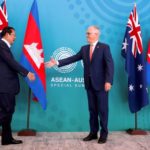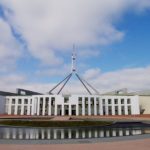A sweet solution to the sugar problem
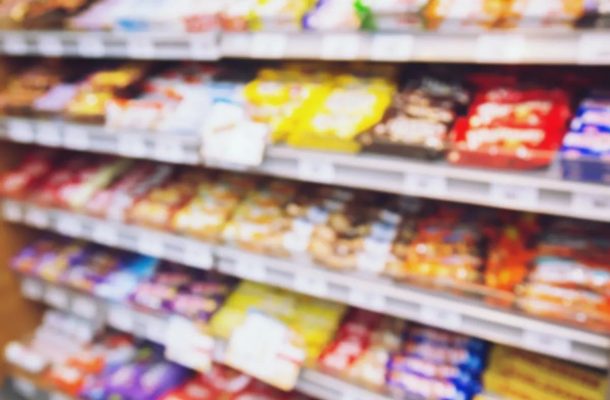
For three months in 2018 – away from the glare of metropolitan Australian cities and research centres – a unique experiment involving food, drinks and sugar took place in the far north of the country. The findings, researchers say, deserve to be taken into account everywhere.
Healthy Stores 2020 – a collaboration co-led by Monash University and a leading Indigenous community organisation, but also involving five other universities, including two in Canada – wanted to explore retail stores in remote First Nations communities to figure out whether, through marketing and merchandising changes, they could sell more nutritious food and drinks.
The answer in short is yes, they could. Customers in general bought more water or diet drinks than sugary ones, and they also, in general, bought fewer added-sugar products and sweets. All this without the stores losing money.
“We feel confident our results can be generalised across communities,” says Monash University’s Associate Professor Julie Brimblecombe, of Nutrition, Dietetics and Food in the Faculty of Medicine, Nursing and Health Sciences, who co-led the research.
“We urge mainstream supermarkets to consider the findings from Healthy Stores 2020 so these results can hopefully benefit all consumers. It’s a big vision!”
Rewards of a collaborative approach
Apart from the results, the way the project was pulled together speaks of a rich, inclusive and also a very real-life effort toward the huge problem of type 2 diabetes, kidney disease and heart disease in Indigenous communities, which the research group’s new paper describes as the result of “colonisation and continued social injustices”.
ALPA is the Indigenous organisation at the collaborative heart of it – the Arnhem Land Progress Aboriginal Corporation. ALPA is a leader in remote retailing, community services, enterprise, and economic development.
By generating surplus through economic independence, ALPA invests in benevolent funds for its member communities. It operates across the Northern Territory, as well as the Far North and Torres Strait regions of Queensland. The study is now published in Lancet Planetary Health.
“Healthy Stores 2020 happened off the back of a very long relationship with ALPA,” says Associate Professor Brimblecombe. “We started doing research with them in the early 2000s, and they’ve had a nutrition policy since the 1980s.
“They have an all-Indigenous board who are not just concerned with the economic growth of the organisation and the social development of communities, but also the health of their communities.”
Associate Professor Brimblecombe and her team, with ALPA and Outback Stores (another remote retailer), had already studied the effect of discounting the price of fresh fruit and vegetables at remote stores. They wanted to take it further.
“We all had a big meeting,” she says. “ALPA people started saying, ‘It’s good to promote fruit and vegetables, and it’s good to promote healthy food, but what can we do about the unhealthy food?’
“Just like in mainstream supermarkets, we see a proliferation of junk food appearing on the shelves in remote communities,” she says. “ALPA suggested working together to do research and to use their retail expertise around merchandising and selling products.
“What if we don’t allow the marketing of unhealthy food, and allow the marketing of healthy food?
“What if we turn merchandising on its head to restrict merchandising of unhealthy food?
“That’s how Heathy Stores 2020 came about.”
“It was important to improve long-term success and sustainability – nutrition strategies need to consider the impact on store viability, to support ongoing food security, and respect customer choice.”
The study includes nutrition researchers from Monash, the Menzies School of Health Research in Darwin, the University of Queensland, the Institute for Health Transformation at Deakin University, the University of South Australia, and two universities from Canada, due to their interest in reshaping remote food retail.
The lead authors are Associate Professor Brimblecombe and the Menzies’ Dr Emma McMahon.
Two truths underpin the research. Indigenous leaders understand the link between diet and health, and merchandising (price promotions, end-of-aisle displays, shelf space and display height) affects sales in food retail.
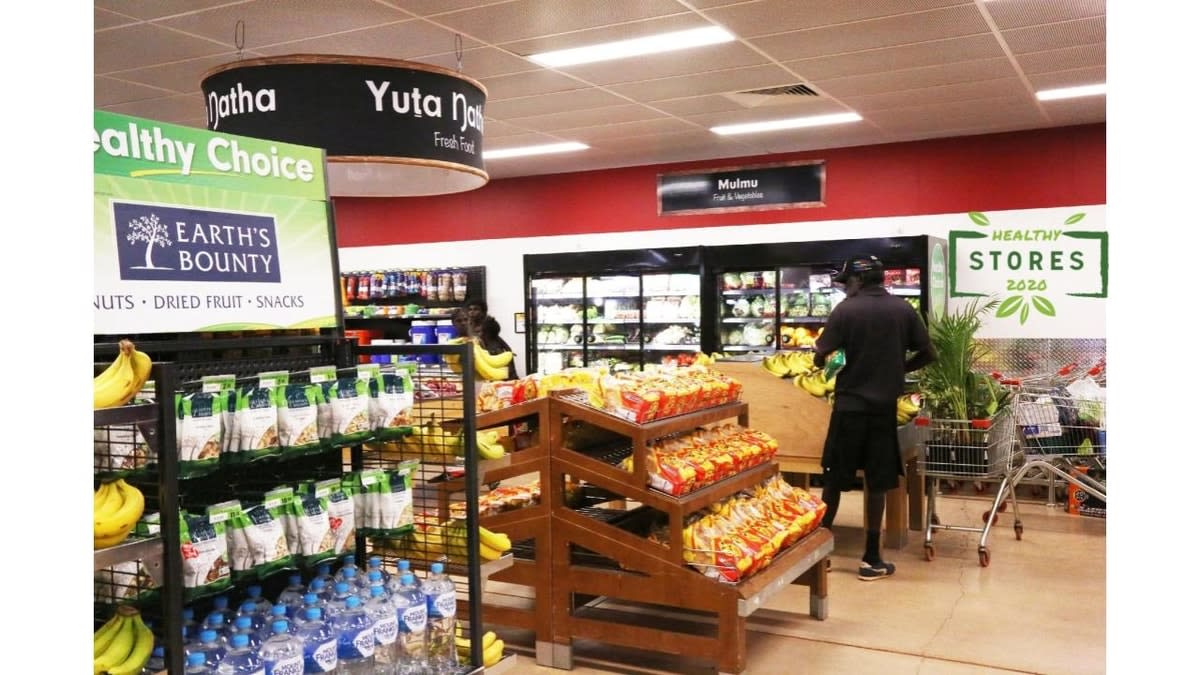
Striking a delicate balance
The conundrum for the research group was how to dissuade customers from buying certain things without the customers feeling like it was an experiment at their expense, and keeping stores viable.
“It had to be good for the customers and the store owners,” says Khia De Silva, ALPA’s health and nutrition manager. “It was important to improve long-term success and sustainability – nutrition strategies need to consider the impact on store viability, to support ongoing food security, and respect customer choice.”
ALPA – formed in 1972 – operates 25 stores in the Northern Territory and Queensland, the majority of which are benevolent, meaning the money goes back into communities for ceremonies, education, medical escorts, community events, and its nutrition program.
“There was lots of discussion,” says Associate Professor Brimblecombe. “How do we do this where it will not be a risk to the organisation? The stores still need to make money. In some communities there is one store, but in many communities there are competing stores.
“There were a whole lot of factors to consider in co-design – what is the best strategy, what will have the best chance of working, what will be feasible from the community and the retail perspective?”
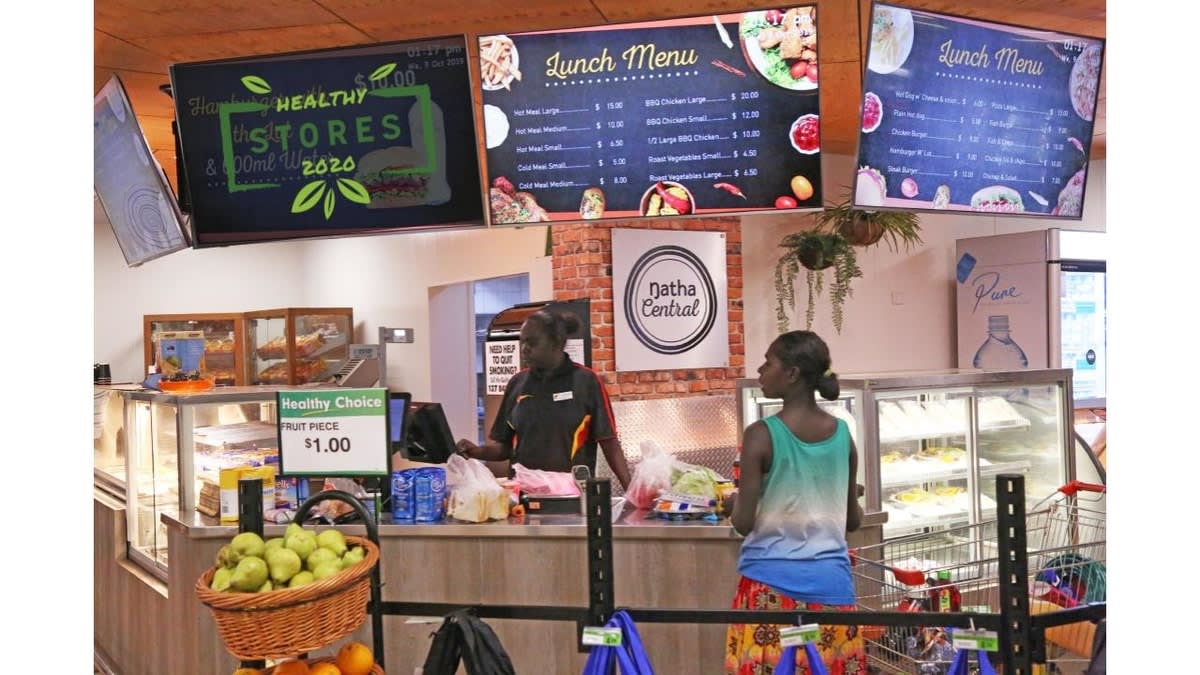
The research essentially involved modifying or “editing” choice in the stores, she says.
“Choice is valued by ALPA, who are an Indigenous organisation operating in a context of a lot of government policy and strategy being imposed on Aboriginal communities, and so choice sits very closely with that concept of self-determination.
“It was extremely important that choice not be taken away from the customers. That is what we managed to do. If you wanted to buy chocolate or lollies or soft drink, that choice is still there, just not as in-your-face,” she says.
“What marketing is doing is editing customer choice without the customer being aware of that. Marketing is about bringing products to the customer’s attention so they are going to choose one product over another product.
“What Healthy Stores 2020 did was reverse this marketing to be on healthy food and drinks only, rather than on unhealthy food and drinks.”
The magnificent seven
The study had seven components, in 10 stores:
-
No promotions of “discretionary” food.
-
No misleading promotions.
-
No discretionary items at the counter, ends of aisles or high-traffic areas, and healthier food substituted in these areas.
-
Reduced shelf space for high-sugar products.
-
No more than 40% of fridge space for sugar-sweetened beverages.
-
No large soft drinks in the fridge.
-
Sticker and shelf “strips” promoting water as the healthiest drink.
The findings, in more detail, were:
-
In 12 weeks across 10 stores, 1.8 tonnes less “free” sugar (added sugar to food or drink) was purchased – the weight of a car across the 10 study stores.
-
7.5% less free sugars from confectionery was purchased.
-
6.8% less free sugars – and 13.4% for soft drinks – from targeted drinks purchased.
-
Total “free” sugar sales fell by 2.8%.
-
Total sales of targeted drinks fell by 8.4%.
-
Money spent on targeted foods and drinks reduced slightly, except for sweet biscuits.
-
Money spent on non-targeted drinks increased.
-
Business performance was not adversely affected.
The paper comes as the federal government holds an inquiry into food pricing and food security in remote Indigenous communities. It’s due to report its findings in November.
Monash University’s Department of Nutrition, Dietetics and Food, and the Monash Business School have made submissions.
This article was published by Lens.
Julie is a dietitian with extensive experience working as a public health nutritionist and researcher in remote Indigenous Australia and the Pacific Islands. Her research generates evidence to address inequities in food supply and food access for remote Indigenous communities.









